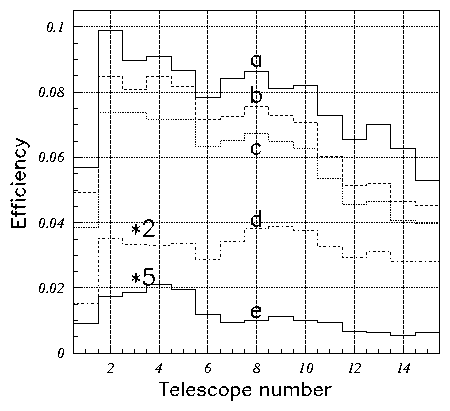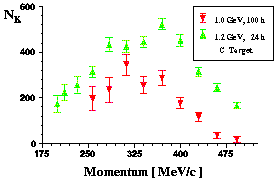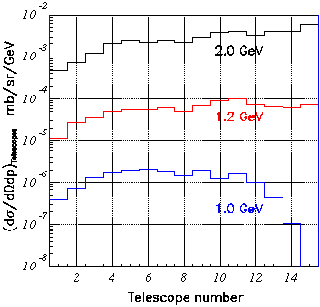|
Kaon production in the reaction p+C®K++X has been measured with the ANKE spectrometer [1] at beam energies of 2.3, 1.8, 1.5, 1.2 and 1.0 GeV. The calibration of the data is still in progress, nevertheless the detected and analysed Kaon rates can be compared with the ROC-model [2] calculations if the acceptance and efficiency of the detection process at ANKE is taken into account. Thus the ROC-model was used as a data generator for GEANT simulations of the ANKE side detector system. |

Fig. 1 Simulation of K+ verification with the ANKE side detector system as a function of telescope number. The curves are explained in the text. |
|
|

